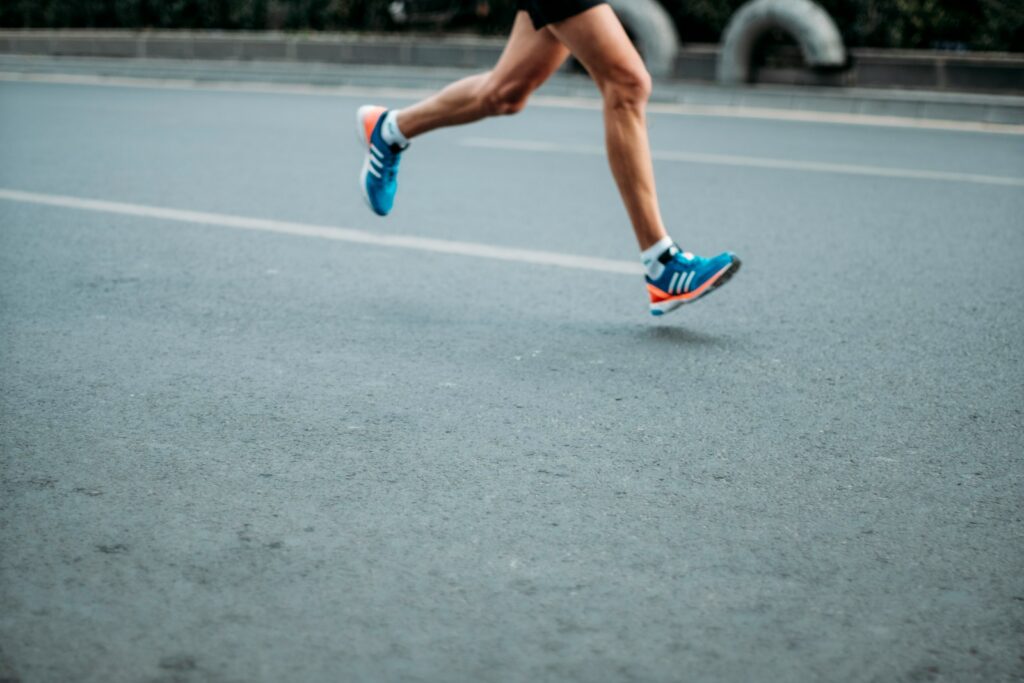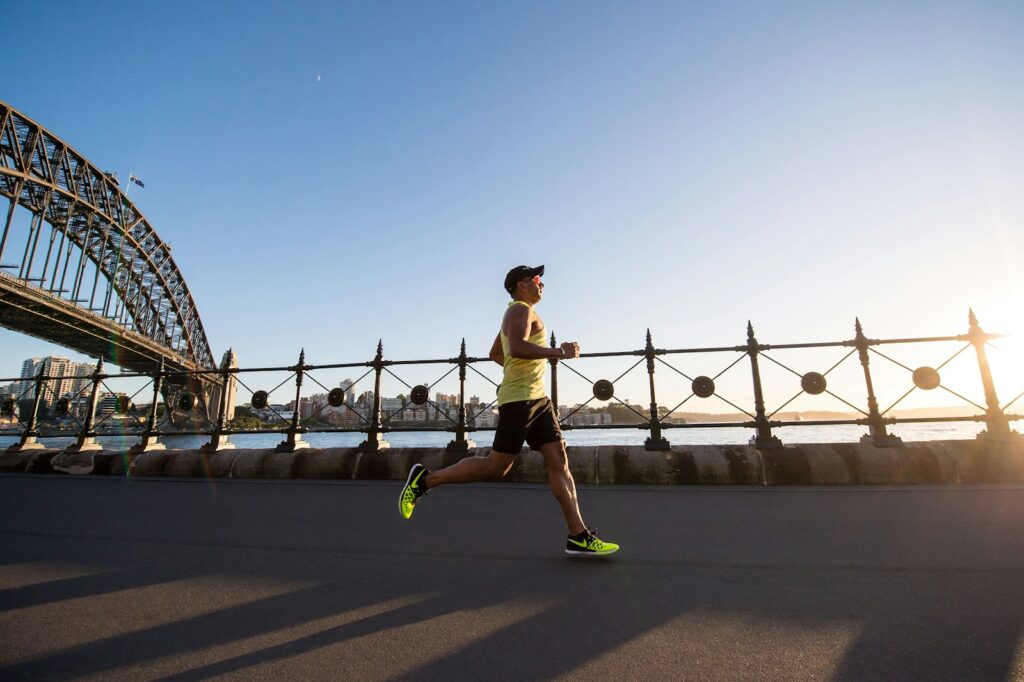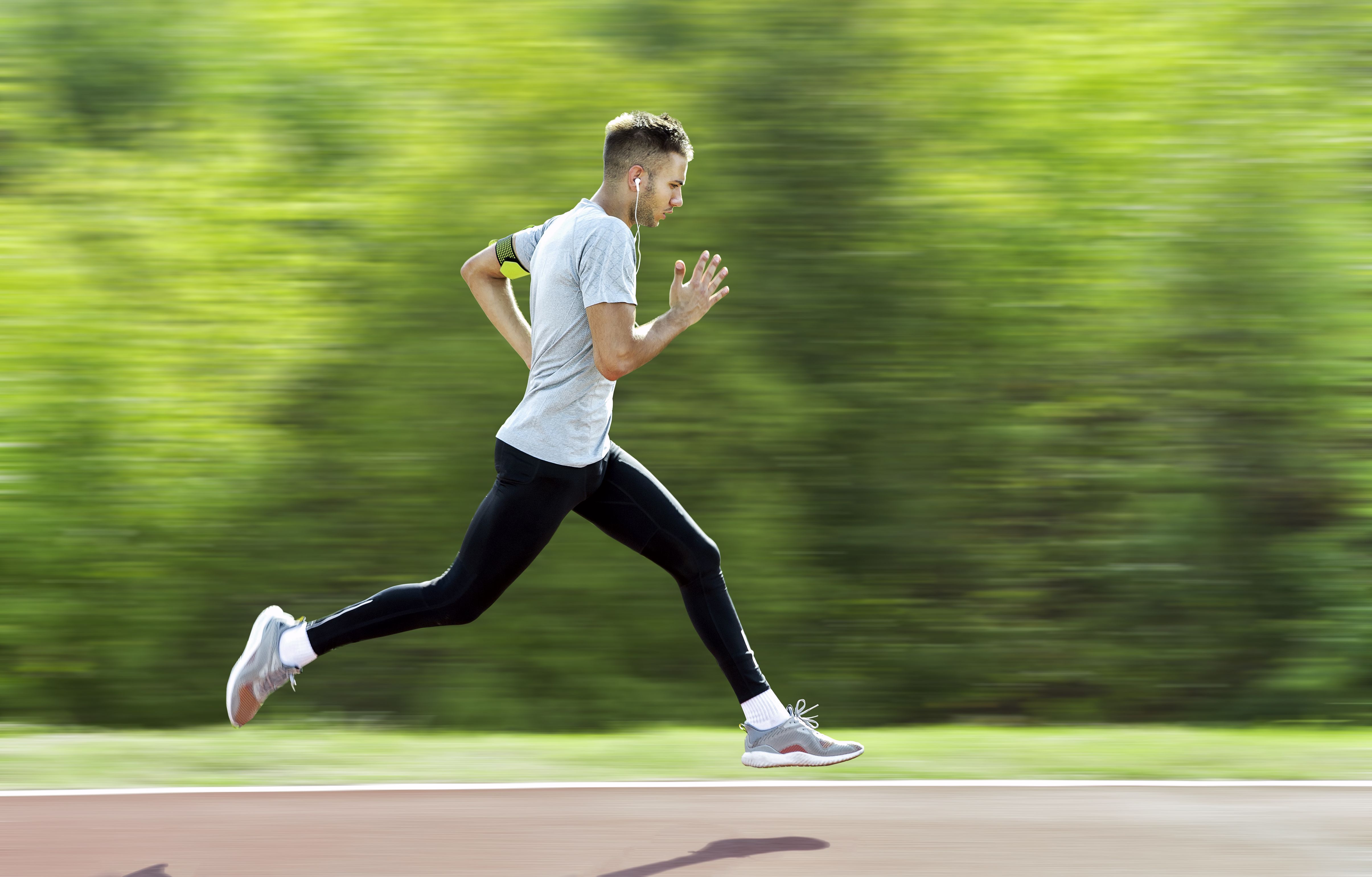
Running, in its purest form, is a fundamental method of terrestrial locomotion, allowing humans and other animals to move quickly on foot. It’s a gait characterized by an aerial phase where all feet are momentarily above the ground, distinguishing it from walking, where at least one foot remains in contact. This simple yet profound activity has been woven into the fabric of human existence for millions of years, evolving from our ancestors’ persistence hunting to a global competitive sport. Yet, beyond its competitive aspects and historical depth, running offers a pathway to remarkable health benefits, provided we approach it with understanding and care.
For many, running is more than just exercise; it’s a pursuit of fitness, a stress reliever, and a connection to personal well-being. However, like any physical activity, it comes with the potential for injury, particularly due to its high-impact nature. The key to a sustainable and enjoyable running journey lies in understanding the intricate mechanics of our bodies, adopting proper form, and implementing proactive strategies to mitigate risks. Thoroughly researched and often reviewed by medical professionals, we aim to ensure accuracy and credibility by citing scientific insights directly from established knowledge.
This article aims to unravel the complexities of running, from its basic biomechanical principles to its far-reaching physiological and psychological impacts. We’ll explore how different aspects of your stride, posture, and even the often-overlooked upper body contribute to efficiency and injury prevention. By delving into the scientific underpinnings of this accessible sport, we hope to provide you with actionable advice and practical tips, fostering a more informed and empowered approach to your running endeavors. Our goal is to make complex health information understandable, offering supportive and encouraging guidance for your well-being.
1. **The Fundamental Mechanics: Understanding Your Running Gait**Running is characterized as a method of terrestrial locomotion allowing rapid movement on foot, distinguishing it from walking, a slower form of movement where at least one foot is always in contact with the ground. A key feature of running is its gait, which typically includes an aerial phase where all feet are above the ground, although exceptions do exist. This dynamic process is built upon a continuous cycle of lower extremity movements, primarily divided into two overarching phases: stance and swing. Each phase, while seamlessly flowing into the next, involves distinct actions crucial for efficient and injury-free movement.
For simplicity, the beginning of the running cycle, when the body is already in motion, is often assumed to be marked by absorption and footstrike. However, due to the continuous nature of running gait, there isn’t one definitive starting point. The stance phase, where the foot is in contact with the ground, is further broken down into absorption and propulsion. Absorption handles the impact forces upon landing, while propulsion generates the force to move the body forward. These components work in harmony to manage the runner’s interaction with the ground.
Conversely, the swing phase involves the limb’s recovery and preparation for the next footstrike. This phase is also subdivided into initial swing and terminal swing, facilitating the return of the limb to its starting position. The interplay between these stance and swing phases, occurring in an opposing fashion between the two lower extremities, creates the rhythmic, propulsive motion characteristic of running. As one limb enters toe-off/propulsion, the other is in the swing/recovery phase, preparing for its footstrike, demonstrating the intricate coordination required for efficient locomotion.
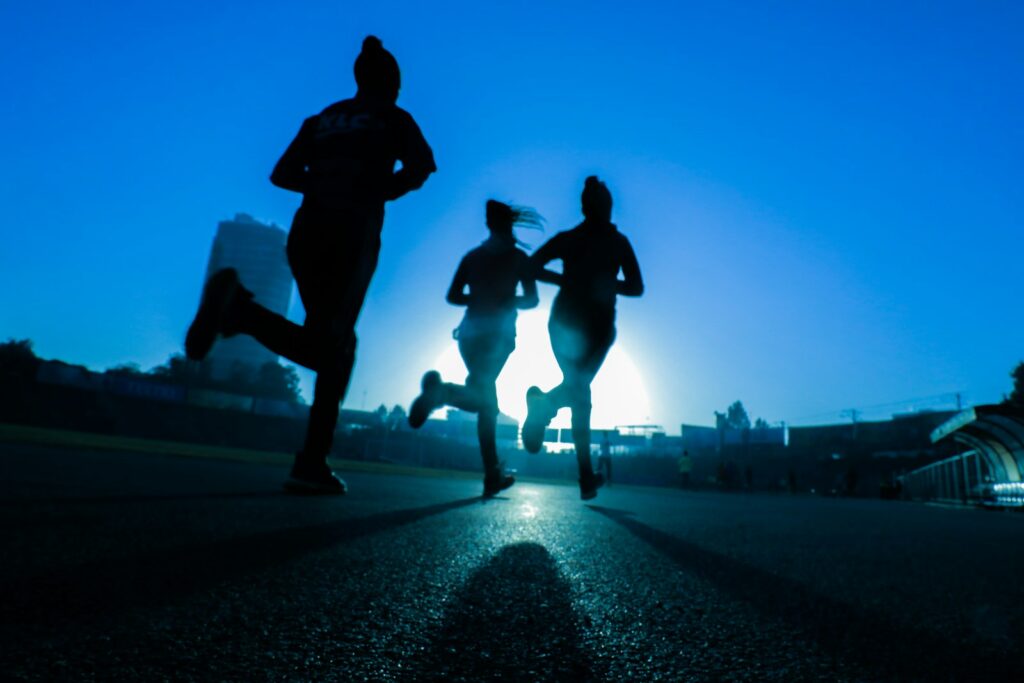
2. **Decoding Footstrike: How Landing Impacts Injury Risk and Efficiency**Footstrike, the moment a plantar portion of the foot makes initial contact with the ground, is a pivotal event in the running cycle that significantly influences both efficiency and injury risk. Research has primarily focused on identifying and preventing injuries during the absorption phases, often highlighting the critical differences between various footstrike types. Common footstrike patterns include forefoot, midfoot, and heel strike, each characterized by the initial contact point of the foot – the ball of the foot, the ball and heel simultaneously, or the heel of the foot, respectively.
Heel striking, where the heel makes initial contact, has generally been associated with higher rates of injury and impact. This is attributed to inefficient shock absorption, as pressures from a heel strike tend to travel through bones rather than being absorbed by muscles. Since bones cannot easily disperse forces, these forces are transmitted to other parts of the body, including ligaments, joints, and bones throughout the lower extremities, extending up to the lower back. This often leads to the body employing abnormal compensatory motions in an attempt to avoid serious bone injuries, such as internal rotation of the tibia, knee, and hip joints. Such excessive compensation over time has been linked to a higher risk of injuries in those joints and the muscles involved in those motions.
In contrast, a midfoot or forefoot strike has been associated with greater efficiency and a lower injury risk. This is largely because the triceps surae muscle group is effectively utilized as a lever system to absorb forces eccentrically through the muscles, rather than through bone. Landing with a midfoot or forefoot strike has also been shown to properly attenuate shock and allow the triceps surae to aid in propulsion via reflexive plantarflexion after stretching to absorb ground contact forces, thus contributing to forward motion. However, it’s important to acknowledge that even among elite athletes, there are variations in self-selected footstrike types, with a prevalence of heel strikers observed in longer distance events, though faster racers and winning individuals often exhibit a greater percentage of midfoot or forefoot striking.
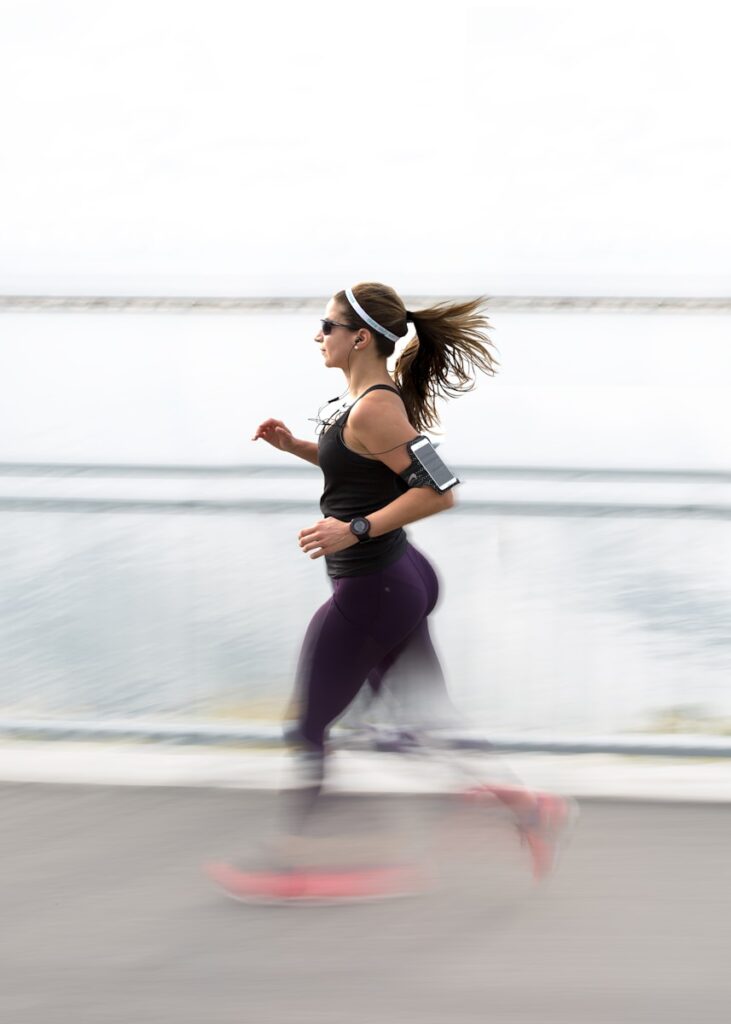
3. **Optimizing Propulsion: Harnessing Power from Hips, Knees, and Ankles**The propulsion phase, occurring from midstance to toe-off, is crucial for understanding how the body moves forward efficiently and powerfully. This phase is not merely a continuation of momentum but an active generation of force involving the coordinated action of the hip, knee, and ankle joints. The setup for propulsion actually begins at the end of the terminal swing when the hip joint flexes, enabling the hip extensors to generate force as they accelerate through their maximal range of motion. This preparatory action primes the body for the powerful push-off that defines propulsion.
As the lower extremity enters midstance, the actual propulsion begins. During this critical juncture, the hip extensors continue contracting, assisted by gravity and the stretch reflex from maximal hip flexion during the terminal swing. This concerted effort of hip extension pulls the ground underneath the body, effectively propelling the runner forward. Simultaneously, the knee joint, which should be slightly flexed due to elastic loading from the absorption and footstrike phases, plays a vital role in preserving forward momentum. This knee flexion stores energy that will be released to aid in the final push.
The final propulsive movements occur during toe-off, involving all three major joints: the ankle, knee, and hip. The plantar flexors, which push off from the ground, return from dorsiflexion in midstance, either by releasing elastic load from an earlier midfoot/forefoot strike or through concentric contraction from a heel strike. With a forefoot strike, the ankle and knee joints release their stored elastic energy. The quadriceps group/knee extensors fully extend the knee, powerfully pushing the body off the ground, while the hip extensors extend to the maximum. This coordinated action generates significant forces, contributing to both pulling and pushing off the ground, as well as initiating knee flexion for the subsequent initial swing phase, creating a cycle of continuous, powerful motion.
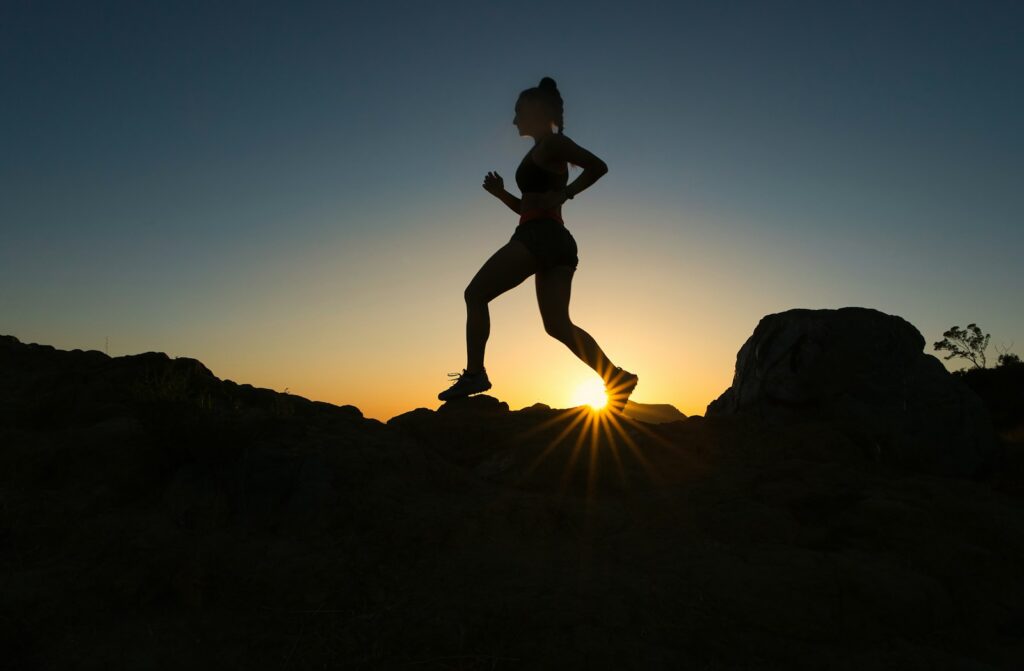
4. **The Upper Body Connection: Balance, Posture, and Core for Injury-Free Running**While often overshadowed by the lower body, the upper extremity plays a crucial, though sometimes overlooked, role in running, primarily serving to provide balance in conjunction with the opposing side of the lower extremity. The coordinated movement of each leg with the opposite arm acts as a counterbalance, particularly during the stance phase, stabilizing the body and contributing to overall running efficiency. Effective arm swing is not just about moving the arms; it’s about optimizing their contribution to the entire gait cycle, and paying attention to these details can prevent wasted energy and improve performance.
Elite athletes demonstrate that the arms move most effectively when the elbow joint is held at approximately 90 degrees or less, with the hands swinging from the hips up to mid-chest level in sync with the opposite leg. The humerus, or upper arm bone, should move from being parallel with the trunk to approximately 45 degrees of shoulder extension, never passing the trunk in flexion. Crucially, there should be as little movement in the transverse plane as possible. Excessive side-to-side motion of the arms can disrupt balance and expend energy that could otherwise be directed towards forward propulsion. This precise, controlled movement helps maintain alignment and reduces unnecessary strain on the body.
Furthermore, the trunk also rotates in conjunction with arm swing, acting as a central balance point from which the limbs are anchored. Therefore, trunk motion should remain mostly stable, with only slight rotation, as excessive movement would contribute to transverse motion and wasted energy. Maintaining good posture is equally vital; the runner’s posture should be upright and slightly tilted forward. This slight forward lean places the runner’s center of mass over the front part of the foot, which helps avoid landing on the heel and facilitates the use of the foot’s natural spring mechanism. It also helps in preventing the braking effect that occurs when a runner lands their foot in front of the center of mass. While maintaining an upright posture is crucial, runners should also keep their frame relaxed and engage their core to keep their posture stable, preventing injury as long as the body is neither rigid nor tense. Common running mistakes, such as tilting the chin up or scrunching shoulders, can disrupt this optimal alignment and should be avoided.
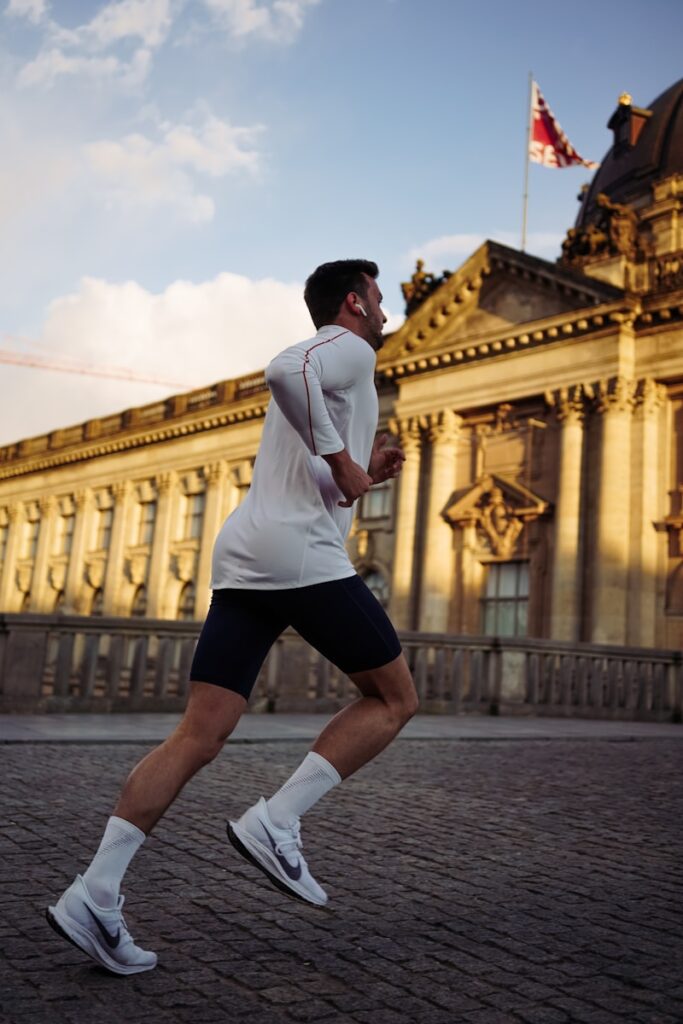
5. **Addressing Asymmetry: Strategies for a Balanced and Stronger Stride**It is quite common for runners to exhibit an asymmetric gait pattern, often characterized by a dominant side. On this dominant side, the leg typically applies slightly more power and has a marginally longer stride length compared to the other leg. While a minor degree of asymmetry might be natural, a significant imbalance, where one leg is excessively stronger and the other excessively weaker, can lead to a host of problems. Such disparities can negatively impact a person’s running technique, reduce overall efficiency, and, most importantly, significantly increase the risk of injury. Achieving a more balanced gait is therefore highly advantageous for long-term running health.
Fortunately, there are several practical ways to address and mitigate these strength imbalances. One effective method involves consciously altering the gait so that the non-dominant leg is used as the dominant leg for a period of time. This means intentionally making its stride length slightly longer than that of the other leg and applying the additional power needed to achieve this. By periodically alternating which leg is considered the ‘dominant’ one during a run, say, using the left leg as dominant for a segment and then switching to the right, runners can foster a more even development of strength. This more balanced use of the legs helps to reduce any strength disparities that may have accumulated over time.
Another strategy to promote even development is running around in a circle, a practice commonly employed by runners who use oval running tracks. For instance, when running anti-clockwise on a track, the inside left stride is naturally shorter, and the outside right stride is longer. To counteract the development of a large muscle imbalance, runners also practice running clockwise. In this direction, the right inside stride length becomes shorter, and the left longer, thus developing both the left and right sides more evenly. Furthermore, incorporating unilateral exercises into a training regimen is highly beneficial. By working the legs one at a time, with the same range of movement for each, exercises like one-legged squats on the left leg before switching to the right ensure each leg performs an equal amount of work, thereby helping to even up their strength levels. This dedication to balance is often observed in higher-performance runners, who tend to exhibit a more even strength ratio between their legs.
6. **Beyond the Burn: The Comprehensive Health Benefits of Running**While the potential for running-related injuries exists, just as in any sport, the myriad benefits associated with regular running are profoundly impactful and extend across multiple dimensions of health. Running is a highly accessible sport that contributes significantly to overall well-being, offering advantages that range from physical conditioning to mental fortitude. Embracing running as part of a consistent routine can bring about transformative changes in one’s life, far outweighing the manageable risks when approached mindfully.
One of the most widely recognized advantages of running is its powerful impact on cardiovascular and respiratory health. Regular engagement in running can lead to potential weight loss, improved cardiovascular fitness, and a significant reduction in the risk of cardiovascular and respiratory diseases. It also helps to reduce total blood cholesterol and strengthens bones, potentially increasing bone density. Beyond these, running can bolster the immune system and significantly improve self-esteem and emotional states. Consistent exercise like running has been shown to effectively slow or even reverse the effects of aging. Notably, even individuals who have previously experienced a heart attack are 20% less likely to develop serious heart problems if they engage more frequently in running or any type of aerobic activity, underscoring its protective qualities. However, it is important to note that while an optimal amount of vigorous aerobic exercise like running brings immense benefits, an excessive dose, such as marathons, might have an opposite effect, potentially associated with cardiotoxicity.
On the metabolic front, running is an excellent tool for weight management and improving body composition. Research suggests that a person of average weight will burn approximately 100 calories per mile run, making it a highly effective activity for calorie expenditure. Running also has the added advantage of increasing one’s metabolism, a benefit that persists even after the run, allowing the body to continue burning an increased level of calories for a short period. For new runners, getting into shape takes time and patience, with consistency and a slow, gradual increase in speed and distance being key. Listening to one’s body is paramount; if gasping for breath or feeling exhausted, it’s beneficial to slow down or shorten the distance for a few weeks. Conversely, if a pace or distance no longer feels challenging, it may be time to speed up or run farther, always prioritizing comfort and safety over pushing too hard.
The psychological benefits of running are equally profound. Many participants report experiencing an elated, euphoric state, commonly referred to as a “runner’s high.” Beyond this acute feeling, running is frequently recommended as therapy for individuals with clinical depression and those coping with addiction. The enjoyment of nature and scenery often associated with outdoor running also improves psychological well-being. In animal models, running has been shown to increase the number of newly created neurons within the brain, a finding with significant implications for aging, learning, and memory, with a recent study linking running to improved memory and learning skills. Running is also a great technique to lower inflammation, stress, anxiety, and depression. People with seasonal affective disorder can benefit significantly from running outside in warm, sunny weather, as it improves mental alertness and sleep. Both research and clinical experience demonstrate that exercise can be an effective treatment for serious depression and anxiety, with some physicians even prescribing exercise to most of their patients. Running can have a longer-lasting effect than anti-depressants, and the non-threatening environment it offers generates a sense of achievement and belonging, which greatly aids those grappling with mental illness.
Running, while profoundly beneficial, inherently carries a risk of injury due to its high-impact nature. Understanding these common injuries and implementing effective prevention strategies is crucial for a sustainable and enjoyable running journey. Our next section delves into specific injury types, the critical role of terrain and footwear, and other holistic approaches to safeguard your running journey, ensuring you stay active and healthy.
Read more about: Unlocking the Secrets of Auto Theft: The 14 Most Common Ways Expensive Sports Cars and High-Value Vehicles Vanish in the U.S.
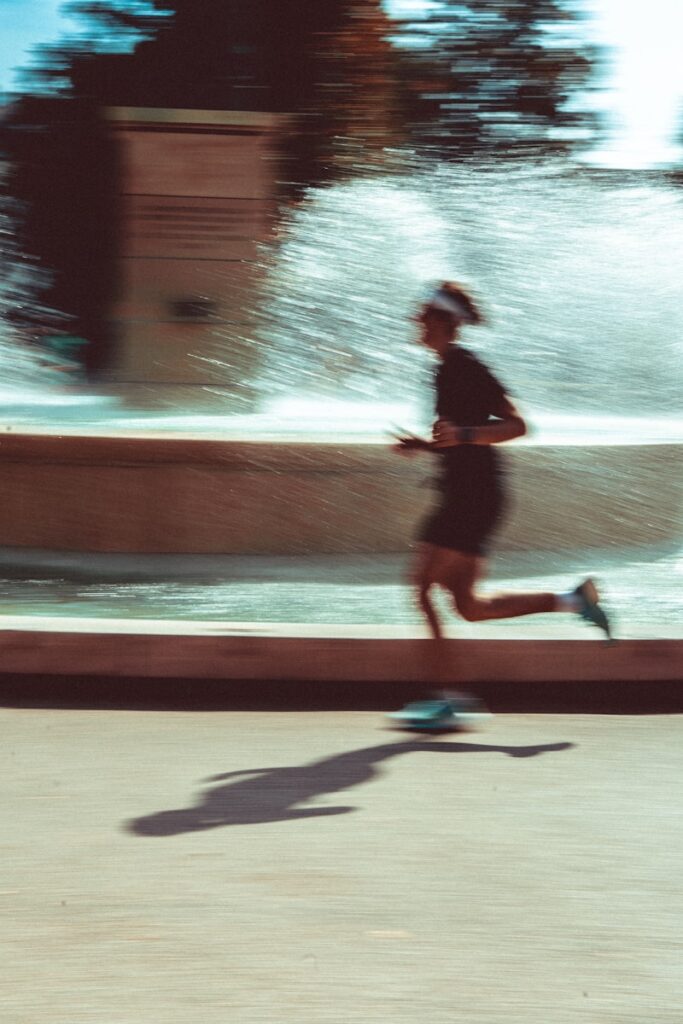
7. **High-Impact Injuries: Understanding the Risks and Prevention Basics**Given running’s high-impact nature, many injuries are unfortunately associated with this popular activity. These often arise from repetitive stress on the same tissues without adequate time for recovery or from running with improper form. This constant strain can manifest in various ways, impacting different parts of the lower body and beyond.
Changes in running volume, for instance, are frequently linked to the development of conditions like patellofemoral pain syndrome, iliotibial band syndrome, patellar tendinopathy, plica syndrome, and medial tibial stress syndrome. Similarly, altering your running pace too quickly or drastically can contribute to Achilles tendinitis, gastrocnemius injuries, and plantar fasciitis. These are just some examples of how the body responds to the demands placed upon it during running.
To minimize the risk of these common injuries, runners generally adopt several key strategies. These include thoroughly warming up before exercise to prepare the muscles, consistently focusing on proper running form—as discussed in detail in our previous section—and incorporating strength training exercises into their routine to build resilience. A well-balanced diet, allowing sufficient time for recovery between runs, and applying ice to sore muscles or taking ice baths are also vital components of a comprehensive prevention plan. By addressing these factors proactively, runners can significantly reduce their vulnerability to high-impact injuries.
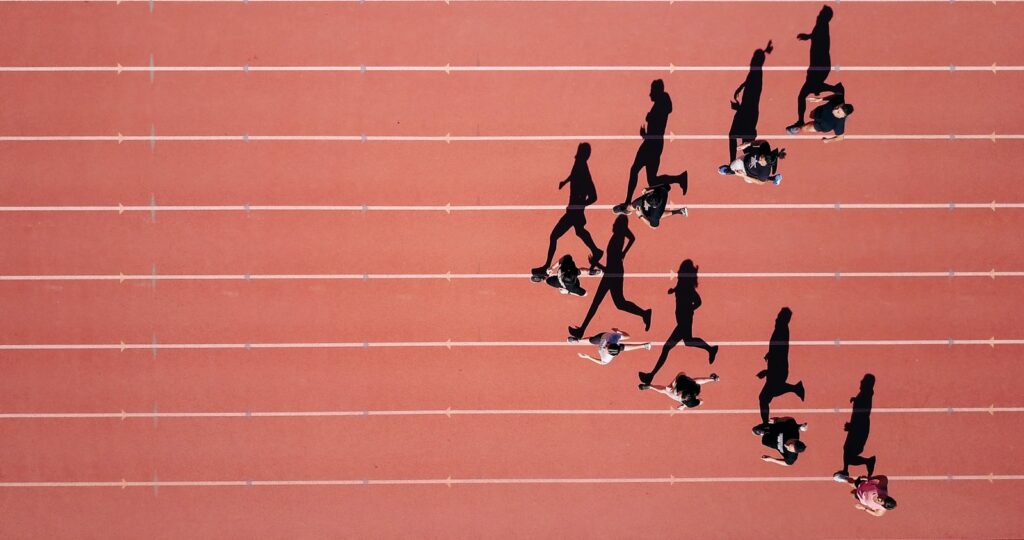
8. **Patellofemoral Pain Syndrome (Runner’s Knee) and IT Band Syndrome: Targeting Knee Health**Among the most frequently encountered running ailments are those affecting the knee, particularly iliotibial band syndrome. This condition is so prevalent among runners that it is often colloquially known as “runner’s knee” or “jogger’s knee.” It arises when the iliotibial band, a muscle and tendon structure that originates at the hip and extends down the length of the thigh to attach to the upper part of the tibia, becomes inflamed, typically due to the repetitive bending of the knee during running.
The tell-tale symptoms of iliotibial band syndrome often include noticeable pain and swelling on the outside of the knee. When these signs manifest, immediate action is crucial: applying ice to the affected area promptly and ensuring the knee is given ample rest for optimal healing. For the majority of knee injuries, a regimen of light activity combined with sufficient rest proves to be an effective course of treatment.
However, in more severe or persistent cases, medical intervention may be necessary. Arthroscopy is a common surgical procedure utilized to repair ligaments, while in truly extreme situations, reconstructive surgery might be required. The widespread nature of these knee issues is underscored by a 2011 survey, which identified knee injuries as accounting for a significant 22.7% of the most common running-related injuries, highlighting the importance of preventative measures and proper management for knee health.

9. **Medial Tibial Stress Syndrome (Shin Splints): Protecting Your Shins**Another well-recognized and often uncomfortable running injury is medial tibial stress syndrome, more commonly and accurately referred to as shin splints. This condition specifically arises during running when the muscles along the tibia, or shin bone, are subjected to overuse. The repeated impact and strain, especially without proper conditioning or recovery, can lead to inflammation and pain in this area.
The onset of shin splints typically manifests as pain along the inner edge of the shinbone, which can range from a dull ache to a sharper, more intense discomfort during or after activity. This muscle overuse, often exacerbated by sudden increases in training intensity, duration, or running on hard surfaces, stresses the muscles, tendons, and bone tissue surrounding the tibia, leading to the characteristic pain.
Effective prevention and management of shin splints largely revolve around mitigating the causes of muscle overuse. This involves carefully monitoring changes in running volume and pace, as previously noted, to avoid sudden spikes in exertion. Ensuring sufficient rest and recovery periods, incorporating strength training for the lower legs, and gradually increasing training loads are all critical steps. By being mindful of these factors, runners can significantly reduce their risk of developing this common and often debilitating injury.
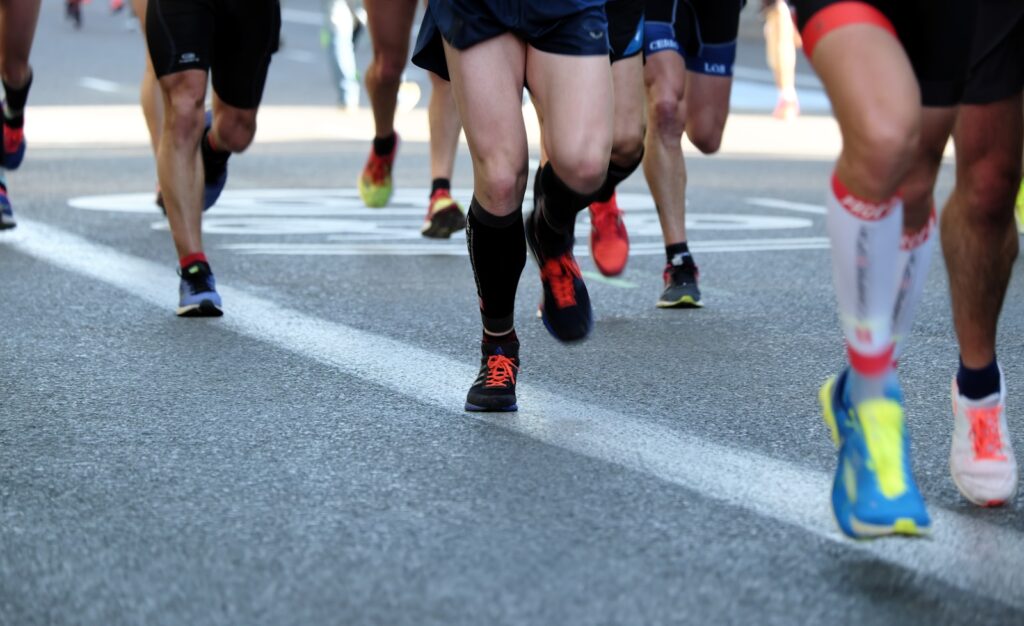
10. **Achilles Tendinitis and Plantar Fasciitis: Foot and Ankle Care**Focusing our attention to the crucial structures of the foot and ankle, two common running-related injuries that frequently emerge are Achilles tendinitis and plantar fasciitis. These conditions, often brought on by changes in running pace or inadequate recovery, can severely impact a runner’s ability to maintain their training and overall comfort. Understanding their nature is the first step toward effective prevention and management.
Achilles tendinitis specifically involves the Achilles tendon, the thick cord of tissue that connects the calf muscles to the heel bone. This injury typically presents as pain and stiffness along the back of the leg, near the heel, particularly after activity or in the morning. It is a common consequence when there’s an increased load on the tendon, such as from suddenly increasing running speed or duration, without giving the body adequate time to adapt and strengthen.
Conversely, plantar fasciitis targets the plantar fascia, a thick band of tissue that runs across the bottom of your foot, connecting your heel bone to your toes. This condition is characterized by a sharp, stabbing pain, usually felt in the heel or arch of the foot, especially with the first steps in the morning or after periods of rest. Like Achilles tendinitis, it is often precipitated by factors like an abrupt change in running mechanics, a significant increase in mileage, or insufficient support from footwear. Attending to changes in pace and ensuring proper foot support are vital for preventing both these painful conditions.

11. **The Critical Role of Terrain and Footwear: Running Smart**Beyond individual biomechanics, the external factors of running terrain and footwear play a significant role in both performance and injury prevention. Many runners, particularly those in urban environments, frequently run on concrete surfaces. While convenient, running exclusively on concrete means the body adjusts to this flat, unyielding surface, potentially leading to the weakening of certain stabilizing muscles, compounded by the added impact forces transmitted through a harder ground.
To counteract this, it can be highly beneficial to occasionally vary your running terrain. Incorporating trail, beach, or grass running introduces unstable ground, which effectively engages and strengthens different muscle groups that might otherwise be neglected on flat, hard surfaces. However, runners must exercise caution on such varied terrain, as there’s an increased risk of twisting ankles. Furthermore, running downhill, though seemingly less strenuous, significantly increases knee stress and should therefore be approached with moderation or avoided if knee issues are present. Adjusting the frequency and duration of runs can also be a simple yet effective injury prevention strategy.
Regarding footwear, the debate between barefoot running and wearing appropriate shoes for injury reduction remains a controversial topic. While barefoot running has been promoted by some as a means to reduce injuries by encouraging a more natural footstrike, a majority of professionals still advocate for the wearing of appropriate shoes as the most effective method for avoiding injury. This emphasis is on providing necessary cushioning, support, and stability to the foot and ankle during the high-impact activity of running.
Interestingly, a study conducted in 2013 provided further insight, concluding that wearing neutral shoes, which offer cushioning without significant motion control features, is not associated with an increased risk of injuries. This suggests that for many runners, the focus should be on selecting footwear that feels comfortable and provides adequate protection for their individual foot mechanics and running style, rather than adhering strictly to one extreme or the other. Choosing the right shoe and varying your running surfaces are fundamental steps toward safeguarding your running journey.

12. **Chafing: Simple Solutions for Skin Protection**Beyond the more serious musculoskeletal injuries, runners often contend with another common, albeit less severe, issue: chafing. This irritating skin condition is caused by the repetitive rubbing of one piece of skin against another, or against an article of clothing, leading to friction and irritation. While not a major threat to performance, it can certainly make a run uncomfortable and painful.
Common locations where chafing is likely to occur include the inner thighs, where skin-on-skin contact is frequent, and the , particularly for men wearing loose-fitting shirts. The affected skin typically feels coarse to the touch and develops a rash-like appearance, which can be red, irritated, and sometimes even blistered, making continued activity quite challenging.
Fortunately, a variety of effective prevention and treatment methods are readily available for chafing. Many runners find relief using deodorants or specialized anti-chafing creams, which create a barrier to reduce friction. Home remedies, such as applying band-aids to sensitive areas like or using petroleum jelly or other greases to minimize rubbing, are also widely employed and can be quite effective. The key, however, lies in prevention, and this is where choosing appropriate form-fitting clothing plays a crucial role.
By selecting moisture-wicking, seamless, and well-fitting apparel, runners can significantly reduce the likelihood of skin rubbing against itself or against fabric. This proactive approach ensures that minor irritations like chafing don’t detract from the enjoyment and focus of a run, allowing you to concentrate on your performance and the myriad benefits that running offers.
As we’ve explored the multifaceted world of running, from its core biomechanics to the common challenges runners face, it becomes clear that a thoughtful and informed approach is paramount. By understanding how your body moves, proactively addressing potential issues, and embracing strategies for prevention, you can ensure your running journey is not just enduring, but truly thriving. Remember, every step is a testament to your commitment to health, and with the right knowledge, it can be a comfortable and rewarding one too.

